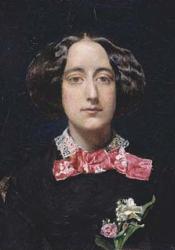Publication of Coventry Patmore's, "The Angel in the House"
The Angel in the House published by Coventry Patmore in 1854 is a narrative poem that prescribes the ideal qualities of a Victorian wife. Patmore, using his own wife as a model, depicted the perfect Victorian woman as angelic, sweet, and lacking any desire for sexual intercourse. Victorian women's "angelic" purpose was to make a morally upright household for her husband. John Ruskin praised Patmore for his depiction of women as keepers of a moral house. Ruskin wrote that a true wife would make a good household wherever she was - that her duty was to make a "moral home" even when out in public. Patmore counteracts the idea of the "angel" with images of "fallen women." He condemned women who had sexual urges, sexual encounters outside of marriage, and prostitutes.
The Angel in the House advocated for separate spheres - meaning that men had a place in the "real world" and women were naturally attuned to household work. Victorian women's unrealistic moral virtues were used to argue that they were more suited to raise and teach children. The poem also asserts that men were created for public work and their physiognomy was not suited to raising children.
Upon publication in 1854, The Angel in the House received very little attention from the Victorian public. Later in the century, The Angel in the House became a literary sensation in the United States of America - which later influenced its revival in England. The text has often been studied by feminist scholars and the like not because of its literary influence but because of its reflection on women and gender roles in Victorian society. Scholar Carol Christ describes the poem as "...not a very good poem yet it is culturally significant, not only for its definition of the sexual ideal but also for the clarity with which it represents the male concerns that motivate fascination with that ideal." (Moore, 41).
One can connect "The Angel in the House" to Brontë's Jane Eyre because of the prescribed gender roles which occur in the latter. For example, Jane is relegated to the sphere of homemaking. Jane does not want to be a teacher, governess, or purely a housewife - yet, according to Patmore, these are the only roles that are acceptable for women. Not only was the concept of "separate spheres" frustrating for Jane, but it also was frustrating for Charlotte Brontë. Bronë wanted to write but was relegated to certain "acceptable" positions in her life.
Works Cited
Furneaux, Holly. “Victorian Sexualities.” British Library, 15 May 2014, www.bl.uk/romantics-and-victorians/articles/victorian-sexualities#footnote2.
“Sesame and Lilies.” Sesame and Lilies, by John Ruskin, www.gutenberg.org/files/1293/1293-h/1293-h.htm#citation24.
Patmore, Coventry. “Coventry Patmore's Poem, The Angel in the House.” British Library, www.bl.uk/collection-items/coventry-patmores-poem-the-angel-in-the-house.

